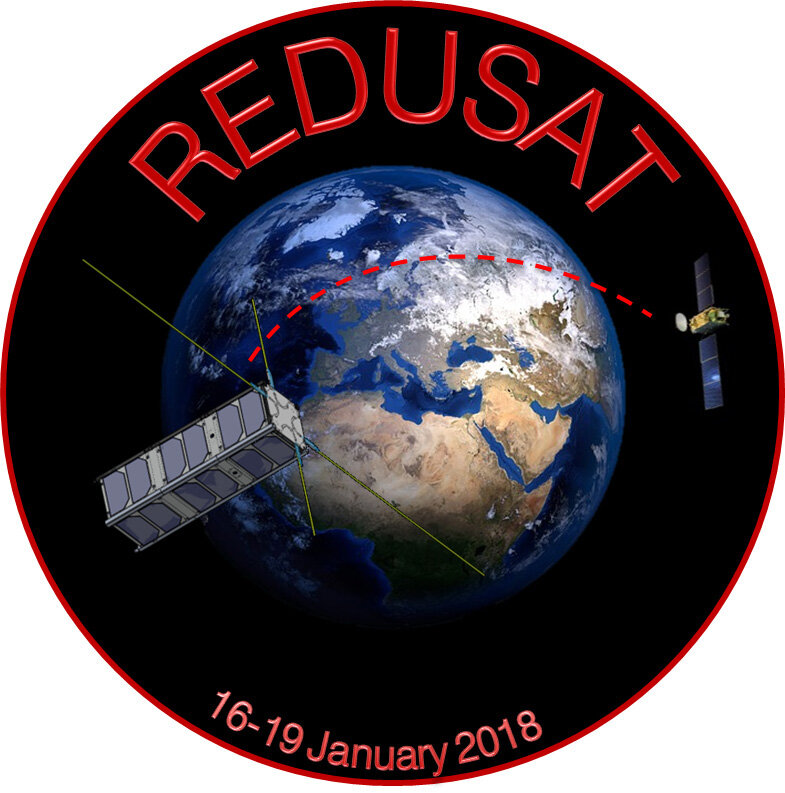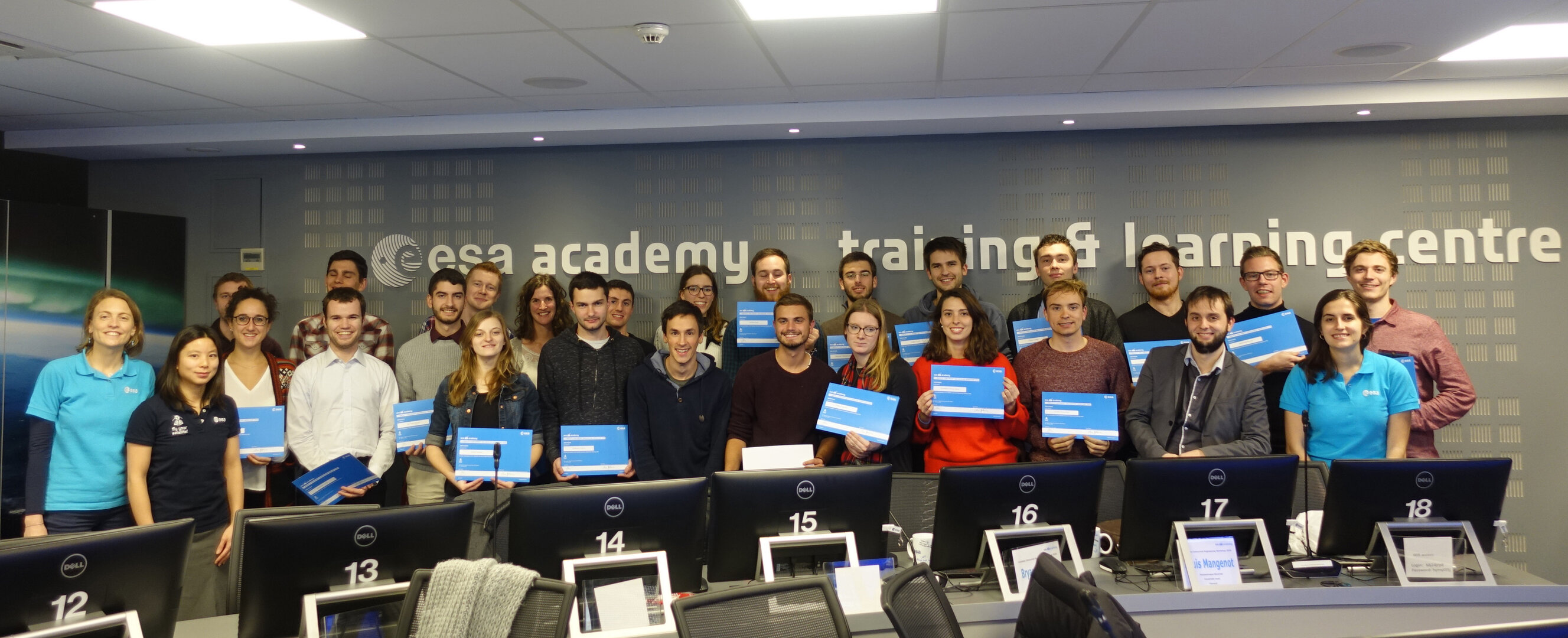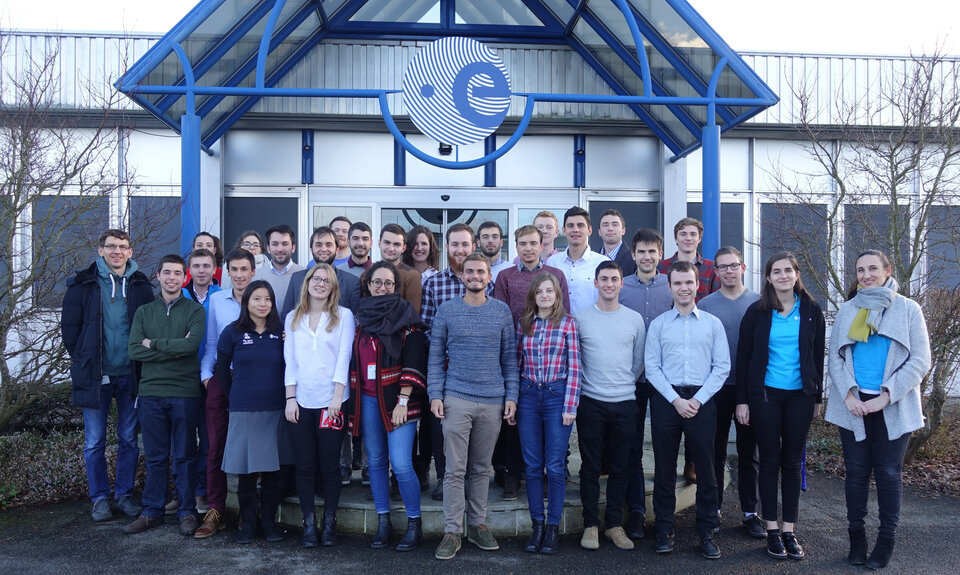Students prepare preliminary design of a CubeSat in four days using Concurrent Engineering!
In just four days, a group of university students managed to prepare the preliminary design of a small satellite. The secret to their success was using the Concurrent Engineering method to speedily but effectively perform design iterations on the different subsystems and systems.
22 university students from eight different ESA Member and Associate States participated in this endeavour. They were brought together by the pilot edition of the CubeSats Concurrent Engineering Workshop, held from 16-19 January 2018 at ESA Academy’s Training and Learning Centre in Belgium. The participants of the Workshop were all members of university CubeSat teams, currently at the early stages of designing their own satellites.
The Workshop began with an introduction to the Concurrent Engineering approach, led by ESA trainers of ESTEC’s Concurrent Design Facility (CDF). Using ESA Academy’s own educational CDF, the students discovered that the Concurrent Engineering approach encourages the various stages of a project to be worked on simultaneously, which can be hugely efficient and boost productivity. Sessions covered topics such as analysis of mission requirements; functional analysis; options and trade-offs; product tree hierarchies; implementation of design iterations; and much more.
"This Workshop has definitely changed the way we will perform the preliminary design of our CubeSat DEDRA. Concurrent Engineering is so efficient!" said a student from the Technical University of Munich (Germany) working on the DEDRA project.

The students also attended CubeSat-themed lectures, aimed at providing an enhanced understanding of these small spacecraft. They learnt about ESA’s CubeSat activities; CubeSat architecture and reliability; mission analysis; and advice and technical know-how valuable for possible future applications to Fly Your Satellite! This programme helps students to develop their own CubeSat mission, and launch it into space!
The participants were then challenged to design a Data Relay Demonstrator craft with a radio observation payload - the “RElay Demonstrator cUbeSAT”, or REDUSAT for short. To complete the task students were divided into seven subsystems: mission analysis, attitude and orbital control systems, communications and on-board data handling, power, configuration and structures, thermal, and systems.
To work on REDUSAT, the students used the Open Concurrent Design Tool (OCDT), which allows easy exchange of information in real-time between engineers of different disciplines, and learned how each subsystem would impact on the others.

"I learnt how to apply Concurrent Engineering to designing a CubeSat, along with engaging lectures including CubeSat architecture, orbital analysis and satellite risk and reliability. I'm looking forward to sharing my newfound knowledge with the WUSAT-3 team, and accelerating the development of our own subsystem designs" said a student from the University of Warwick (UK) working on the WUSAT-3 project.
After three days of iterations and hard work they finalised the preliminary design of REDUSAT, which they then presented to ESA trainers. Their proposed REDUSAT is a 3-unit CubeSat, following an ISS orbit, with a single ground station in ESEC ,and able to host a 1kg radio observation payload.
After this intense Workshop the students are better prepared to develop their own CubeSats, and perhaps even to apply to Fly Your Satellite!
For future opportunities like this please check this page.



